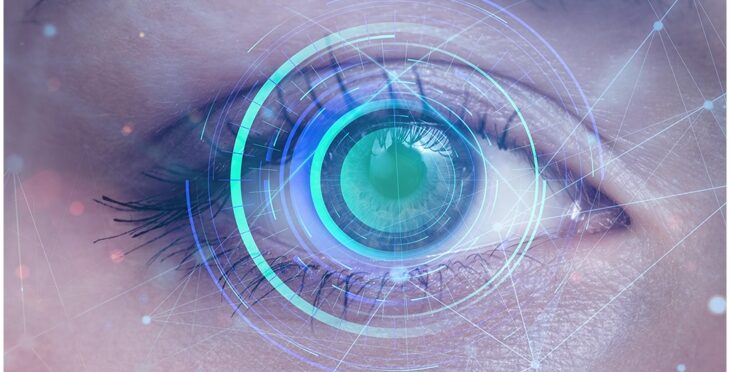Comprehending the Various Eye Conditions Treated by Specialized Eye Treatment Professionals
In the realm of eye care, specialized experts play an important role in diagnosing and dealing with a wide array of eye problems. As we embark on this expedition of the different eye conditions dealt with by specialized eye care specialists, it becomes apparent that the intricate web of ocular health holds a myriad of interesting understandings waiting to be revealed.
Typical Refractive Errors
Refractive errors prevail visual problems created by a blemish in the eye's capacity to correctly concentrate light, causing obscured vision. The most prevalent sorts of refractive errors consist of nearsightedness (nearsightedness), hyperopia (farsightedness), astigmatism, and presbyopia. Myopia occurs when the eyeball is too lengthy or the cornea is as well bent, causing far-off challenge show up blurry. Hyperopia, on the other hand, occurs when the eyeball is too short or the cornea is as well flat, bring about close-by objects running out emphasis. Astigmatism is characterized by an irregularly shaped cornea, resulting in distorted or blurred vision in all ranges. Presbyopia is an age-related problem where the lens loses its versatility, making it difficult to concentrate on close things.
These refractive mistakes can be fixed with numerous approaches, including spectacles, contact lenses, or refractive surgical treatment. Eye treatment specialists play an important function in detecting and managing refractive mistakes to help individuals achieve more clear vision and boost their quality of life.
Age-Related Eye Conditions
As people age, their eyes might be susceptible to a variety of problems beyond refractive errors that can affect their vision and total ocular health. Age-related eye problems are typical and can significantly affect the lifestyle for older adults. Among the most common age-related eye problems is age-related macular deterioration (AMD), a disease that causes central vision loss and can make activities like reading and driving challenging. refractive surgeries in al. Cataracts, another usual condition among older individuals, cause clouding of the eye's all-natural lens, bring about blurred vision. Glaucoma, defined by damages to the optic nerve, is also extra common with age and can result in peripheral vision loss or blindness if left without treatment. In addition, presbyopia, a condition where the eye's lens sheds adaptability, is an all-natural part of aging and results in difficulty concentrating on close objects. Regular eye tests with specialized eye care professionals are important for early detection and monitoring of these age-related eye conditions to protect vision and maintain eye wellness as people get older.
Vision-Threatening Illness
Vision-threatening illness include a variety of serious ocular conditions that have the potential to substantially impact an individual's vision and general aesthetic feature. These diseases position a risk of long-term vision loss if not immediately diagnosed and dealt with by specialized eye care professionals. Some typical vision-threatening conditions include glaucoma, diabetic retinopathy, age-related macular deterioration (AMD), and retinal detachment.
Glaucoma is a group of eye conditions that harm the optic nerve, commonly due to high intraocular pressure, leading to peripheral vision loss and potential blindness if left without treatment. AMD is a dynamic condition affecting the macula, leading to main vision loss.
Early discovery, regular eye exams, and timely treatment are essential in managing vision-threatening diseases to preserve vision and maintain high quality of life. Specialized eye treatment professionals play an essential function in diagnosing, treating, and taking care of these problems to avoid irreparable vision loss.

Corneal Conditions
Corneal conditions include a range of conditions that influence the transparent front part of the eye, understood as the cornea. These conditions can bring about pain, aesthetic disruptions, and in extreme cases, vision loss. One common corneal disorder is keratoconus, where the cornea thins and protrudes exterior into a cone shape, creating astigmatism and obscured vision. Corneal dystrophies, such as Fuchs' dystrophy, cause steady vision loss due to abnormal down payments in the cornea. Corneal abrasions, usually triggered by injury or foreign things, can result in pain, redness, and sensitivity to light. Furthermore, infections like keratitis can irritate the cornea, potentially resulting in scarring and vision impairment if not promptly dealt with. Treatment for corneal problems varies depending on the details condition yet may include drugs, call lenses, or in severe instances, corneal transplants. Regular eye description exams are necessary for early detection and management of corneal conditions to maintain vision and eye wellness.
Neurological Eye Problems
Neurological eye problems entail disorders that impact the connection between the eyes and the brain, affecting visual processing and total eye function. These problems can manifest in numerous ways, affecting vision, eye movements, and also the coordination in between the eyes. One common neurological eye problem is optic neuritis, characterized by swelling of the optic nerve bring about vision loss, shade desaturation, and pain with eye movement.
One more substantial condition is nystagmus, where the eyes make recurring, unrestrained motions, affecting aesthetic acuity and deepness understanding. In addition, problems like amblyopia, typically referred to as "careless eye," result from irregular aesthetic advancement in early childhood, causing Find Out More decreased vision in view it now one eye.
Neurological eye problems require customized care from professionals like neuro-ophthalmologists that have proficiency in both neurology and ophthalmology. Medical diagnosis usually involves a comprehensive eye assessment, imaging studies, and collaboration with specialists to attend to the underlying neurological problems impacting the visual system. Therapy techniques can include medicine, vision therapy, or in serious cases, medical treatments to take care of these intricate conditions properly.

Final Thought
In conclusion, specialized eye treatment specialists deal with a large range of eye conditions, consisting of typical refractive mistakes, age-related eye problems, vision-threatening diseases, corneal problems, and neurological eye problems - refractive surgeries in al. By recognizing these various conditions and looking for ideal therapy from eye treatment experts, individuals can maintain ideal eye health and wellness and vision. It is important to prioritize regular eye assessments and comply with suggested treatment strategies to protect and protect one's vision for the future
Comments on “Local Glaucoma Service Near Me: Trusted Experts for Eye Wellness”